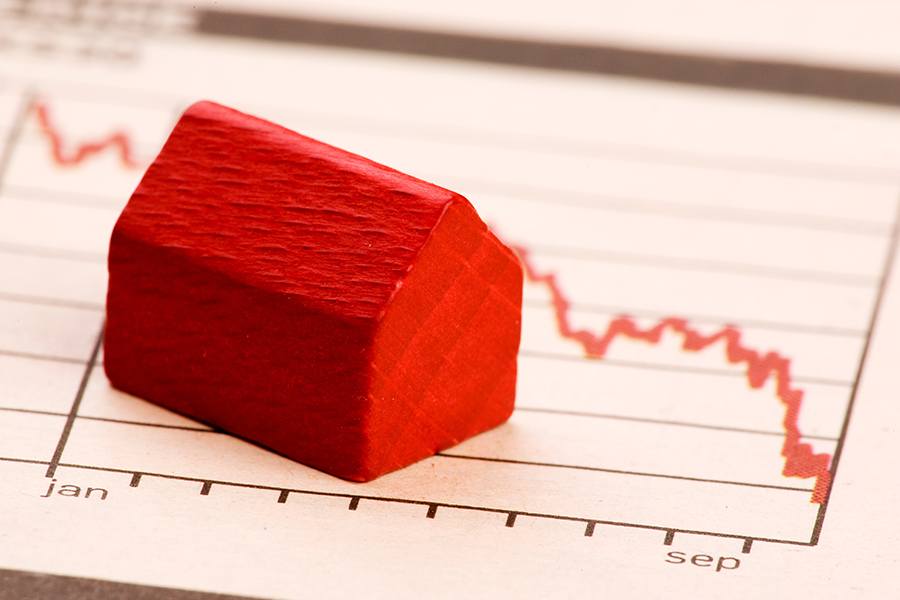I’ll walk you through how to calculate units of production depreciation. First, you divide the asset’s cost basis―less any salvage value―by the total number of units the asset is expected to produce over its estimated useful life to get the depreciation rate. Then, you multiply this rate by the total number of units produced for the period to get depreciation expense. Lastly, you must keep track of accumulated depreciation and record the proper depreciation expense adjusting entry.
Key Takeaways:
- The units of production depreciation expense formula is: Units of Production Rate × Actual Annual Units Produced.
- This depreciation method computes depreciation based on usage, which approximates the cost of the fixed asset consumed based on the number of units produced.
- Units of production are especially appropriate for manufacturers whose usage of machinery varies by year because it matches the cost of the machinery to the revenue that it creates. It also reflects the wear and tear on machinery more accurately.
- The IRS doesn’t allow the units of production method for tax purposes. You can use it for financial accounting, but you’ll need to compute MACRS depreciation for tax reporting.
Step 1: Calculate the Units of Production Rate
To calculate depreciation using the units of production method, start by determining the units of production rate. This involves dividing the asset’s depreciable value (cost minus salvage value) by the estimated total production over its useful life.
| Units of Production Rate = | Cost Basis of the Asset – Salvage Value |
| Estimated Production Over Estimated Useful Life |
To calculate your units of production rate, you’ll need the following:
- Cost basis of the asset: This is the total amount paid to get the asset up and running for use in your business. This typically includes the purchase price, sales tax, installation charges, shipping or delivery fees, and other costs.
- Salvage value of the asset: This is the estimated value of the asset at the end of its useful life (read our guide on how to determine the useful life of an asset for additional insights). You must forecast this value at the time the asset is placed in service. In many cases, the estimated salvage value of a piece of machinery may be little more than its value as scrap metal. The salvage value is also called residual value, scrap value, or break-up value.
- Estimated production over its useful life: If you forecast too few units, you’ll assign too high of a cost to units produced early in the machine’s life and no cost to the units produced at the end of the life. In contrast, if you forecast too many units, you assign too low a depreciation cost per unit and won’t fully depreciate the asset before it reaches the end of its useful life.
Once you have this material, you’re ready to perform the calculation. It’s simply a matter of filling in part 1 of the formula above.
Step 2: Calculate the Depreciation Expense
The second step in calculating units of production depreciation is to determine the number of units the machine produced during the current year and multiply the figure by the units of production rate you computed in Step 1.
Step 3: Calculate Accumulated Depreciation
Accumulated depreciation is the sum of depreciation expenses over the current and all prior years. The adjusted basis of your machine is the difference between the asset’s net cost and the total accumulated depreciation.
Accumulated Depreciation =
Depreciation Expenset
Where:
- n = total number of periods (e.g., months, years) elapsed
- t = period (e.g., specific month or year)
Accumulated depreciation is the summation of all the depreciation expenses recorded for an asset over its useful life up to a specific point in time. It adds together each period’s depreciation expense—whether calculated annually, monthly, or by another interval—to reflect the total amount of the asset’s value that has been written off.
Accumulated depreciation is directly connected to depreciation as it represents the total depreciation expenses that have been reorganized on a fixed asset over its useful life. For more information, head to our article on what depreciation is and how it works.
Step 4: Record Depreciation Expense
To record depreciation, you must make a journal entry debiting Depreciation Expense and crediting Accumulated Depreciation.
Here is a sample journal entry recording $645 of depreciation expense:
Date | Account | Debit | Credit |
|---|---|---|---|
December 31 | Depreciation Expense | 645 | |
Accumulated Depreciation | 645 | ||
(To record the depreciation expense) |
Depreciation computation is only one aspect of fixed asset accounting. Read our guide on what fixed asset accounting is for more information on the four things you need to know.
You may also want to check out other important accounting functions in our article on what bookkeeping is. It also details what a bookkeeper does.
Example of Units of Production Depreciation Calculation for Multiple Years
In this example, we’ll show how to calculate the units of production depreciation for several years on a machine purchased in 2022. Let’s assume the following information:
- Cost of machine: $40,000
- Residual value: $2,000
- Estimated production over estimated useful life: 200,000
- Units produced in 2022: 10,000
- Units produced in 2023: 13,400
- Units produced in 2024: 16,000
- Units produced in 2025: 19,500
Step 1: Calculate the Units of Production Rate
By using the same formula discussed above, the units of production rate should be:
Units of Depreciation Rate = (40,000 – 2,000) ÷ 200,000 = 0.19 per unit
Step 2: Calculate the Depreciation Expense for Each Year
The same depreciation rate per unit is used for the entire life of the asset, so we can easily calculate depreciation for each year:
- 2022 depreciation = 10,000 units × 19 cents = $1,900
- 2023 depreciation = 13,400 units × 19 cents = $2,546
- 2024 depreciation = 16,000 units × 19 cents = $3,040
- 2025 depreciation = 19,500 units × 19 cents = $3,705
Step 3: Calculate the Track Accumulated Depreciation
Accumulated depreciation after the four years of depreciation is the sum of all depreciation claimed, or $11,191.
Track this amount each year, and never let it exceed the original depreciable value of the asset, which is $38,000 ($40,000 – $2,000). Once accumulated depreciation reaches $38,000, the asset is fully depreciated, and any additional units produced do not generate any depreciation expense.
Be sure to look into bonus depreciation and the Section 179 deduction, which lets qualifying businesses deduct the entire cost of many assets in the year of purchase.
Moreover, you may be interested in our bonus depreciation vs Section 179 deduction comparison to see the differences between the two IRS methods of deducting fixed asset cost.
How to Reconcile Tax Depreciation
Since units of production depreciation isn’t allowed for tax purposes, businesses will most likely create dual depreciation schedules for MACRS and units of production depreciation.
Here’s an example of how this reconciliation will happen, with sample computations for MACRS and units of production depreciation:
Scenario
An asset with an initial cost of $100,000 and a salvage value of $10,000 (ignored for MACRS purposes) has a useful life of 5 years. Over its lifespan, the asset is expected to produce a total of 100,000 units. The production is distributed unevenly across the years as follows:
- Year 1: 20,000 units
- Year 2: 30,000 units
- Year 3: 25,000 units
- Year 4: 15,000 units
- Year 5: 10,000 units
MACRS Depreciation (Double Declining Balance for 5-year Property)
The rates of depreciation below are based on the MACRS Depreciation A-1 Half-year Convention table.
- Year 1: 20.00% of $100,000 = $20,000
- Year 2: 32.00% of $100,000 = $32,000
- Year 3: 19.20% of $100,000 = $19,200
- Year 4: 11.52% of $100,000 = $11,520
- Year 5: 11.52% of $100,000 = $11,520
- Year 6: 5.76% of $100,000 = $5,760 (half-year convention)
Units of Production Depreciation
The units of production rate for this example is $0.90 per unit, computed as $90,000 depreciable amount divided by 100,000 estimated units of production.
- Year 1: 20,000 units × $0.90 = $18,000
- Year 2: 30,000 units × $0.90 = $27,000
- Year 3: 25,000 units × $0.90 = $22,500
- Year 4: 15,000 units × $0.90 = $13,500
- Year 5: 10,000 units × $0.90 = $9,000
Yearly Depreciation Comparison
Year | MACRS Depreciation | Accumulated MACRS | Units of Production Depreciation | Accumulated Units of Production | Difference (MACRS - Units) |
|---|---|---|---|---|---|
1 | $20,000 | $20,000 | $18,000 | $18,000 | $2,000 |
2 | $32,000 | $52,000 | $27,000 | $45,000 | $5,000 |
3 | $19,200 | $71,200 | $22,500 | $67,500 | ($3,300) |
4 | $11,520 | $82,720 | $13,500 | $81,000 | ($1,980) |
5 | $11,520 | $94,240 | $9,000 | $90,000 | $2,520 |
6 | $5,760 | $100,000 | 0 | 0 | $5,760 |
Analysis of Timing Differences
In years 1 and 2, MACRS Depreciation is higher than units of production depreciation, leading to a higher depreciation expense for tax purposes. This results in lower taxable income compared to accounting income, creating a deferred tax liability (DTL). The timing difference is positive because the tax depreciation (MACRS) exceeds the book depreciation (units of production).
In years 3 and 4, units of production depreciation catches up, resulting in smaller timing differences. By year 4, the accumulated depreciation for both methods is closer, and the differences start to reverse. During these years, the company will recognize the reversal of some of the previously recorded DTL, as book depreciation may begin to exceed tax depreciation.
And in years 5 and 6, MACRS depreciation drops significantly, while units of production depreciation continues based on actual usage. The timing differences start reversing more quickly, reducing the DTL. By the end of year 6, all differences should be fully reversed.
Implications
The difference between MACRS and units of production creates a lot of implications, especially in the reporting of deferred tax figures.
- Deferred tax liability recognition: The company accumulates a DTL in the early years when tax depreciation exceeds book depreciation. This liability represents future taxes payable when the temporary differences reverse.
- Impact on financial statements: In the early years, tax expense is lower than book expense due to the higher MACRS depreciation. In the later years, the reverse occurs, with higher book expense and lower tax expense.
- Cash flow impact: The early recognition of higher depreciation under MACRS reduces tax payments in the initial years, which can be beneficial for cash flow.
When to Use Units of Production Depreciation
Units of production depreciation work well for businesses using machinery or equipment to make a product, as the depreciation charges reflect actual wear and tear on such equipment and match revenues and expenses. It can provide a more accurate picture of profits and losses by spreading the cost of such assets over the years based on usage. This is helpful for manufacturers since production fluctuates with consumer demand.
Here are some sample scenarios when using units of production depreciation is a good option:
- Assets with usage-dependent value: When an asset’s value is more closely tied to how much it produces than how long it’s owned. Examples include manufacturing equipment, vehicles (mileage-based depreciation), photocopiers (copies made), aircraft (hours flown).
- Varying production levels: When an asset’s usage fluctuates significantly from period to period. This method better matches the cost of the asset to the revenue it generates in each period.
- Reflecting wear and tear: Units of production depreciation accurately reflects the wear and tear on an asset. The more it’s used, the more depreciation is recorded.
Pros & Cons of Units of Production Depreciation
| PROS | CONS |
|---|---|
| Depreciation expense directly tied to the wear and tear on the asset | Not allowed for tax purposes |
| Depreciation expense directly tied to the wear and tear on the asset | Difficult to track and maintain since reconciliation is needed for tax purposes |
| Depreciation expense is more reflective of actual operations as it is based on output | Fluctuation in units of production rates as a result of asset improvements like significant repairs |
| Ideal for assets with varying usage patterns, ensuring that depreciation expense reflects the intensity of use in each period | Tracking actual usage can be more complex and time-consuming than simply using a time-based method |
| More accurate cost allocation can lead to better decisions about pricing, production planning, and asset replacement | Not appropriate for assets that don’t have a clear relationship between usage and value decline |
Frequently Asked Questions (FAQs)
It is a variable cost because depreciation charges vary depending on the number of actual units produced.
Its main advantage is that it computes depreciation based on actual production. It means that depreciation charges match the activity level of production.
Unlike straight-line depreciation (which spreads costs evenly over time) or accelerated methods (which depreciate more in the early years), units of production depreciation ties the expense directly to the asset’s output. This makes it more accurate for assets that have usage-dependent value.
While accepted under GAAP (Generally Accepted Accounting Principles), the IRS doesn’t allow units of production depreciation for tax purposes. You’ll likely use MACRS (Modified Accelerated Cost Recovery System) for tax calculations.
Bottom Line
Units of production is a popular depreciation method that allows businesses to allocate the cost of a fixed asset based upon its use. Common in manufacturing, the units of production rate is calculated by dividing the equipment’s depreciable cost by its expected lifetime production. Multiplying this rate by the asset’s output for the year gives you the depreciation expense for that year.


